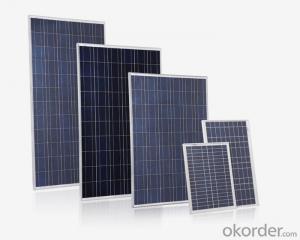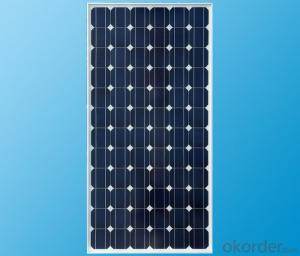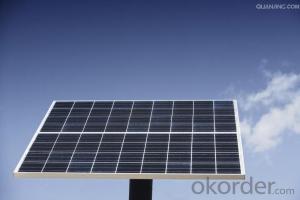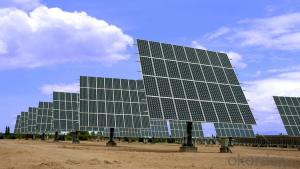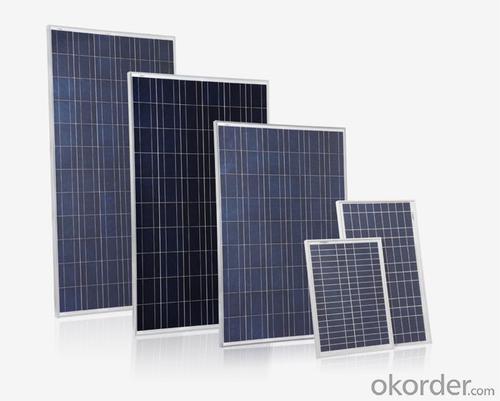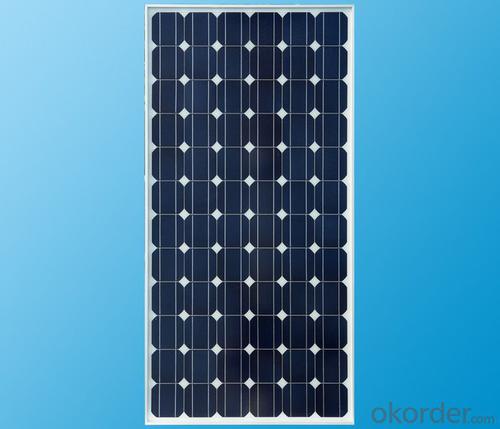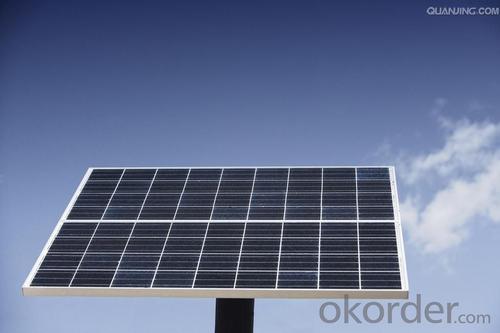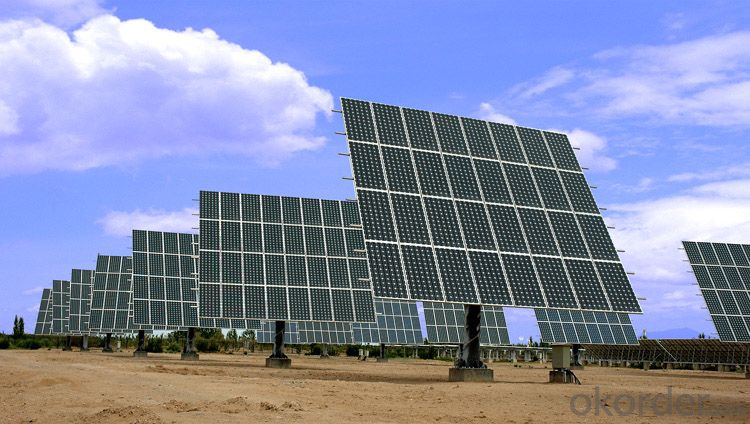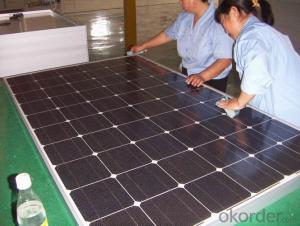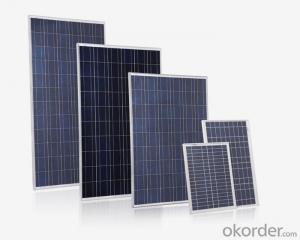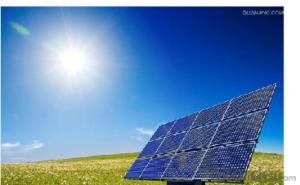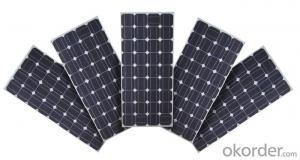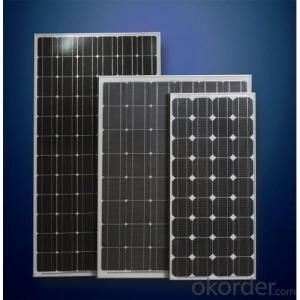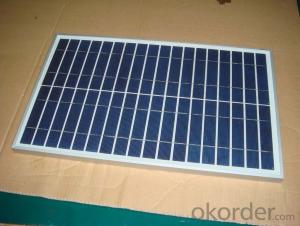High Efficiency 200W Pv Solar Cells for Home Use Favorites Compare Solar Panels
- Loading Port:
- China Main Port
- Payment Terms:
- TT OR LC
- Min Order Qty:
- -
- Supply Capability:
- 10000000000000 watt/month
OKorder Service Pledge
OKorder Financial Service
You Might Also Like
Quick Details
| Place of Origin: | Guangdong China (Mainland) | Brand Name: | CAP | Model Number: | 50w100w150w200w250w300w |
| Material: | Monocrystalline Silicon | Size: | 1385*1035*75mm | Number of Cells: | 72pcs |
| Max. Power: | 300w | type: | solar panel | color: | blue&black |
| warranty: | 5 years |
Packaging & Delivery
| Packaging Detail: | standard export package for solar panel |
| Delivery Detail: | 7-15 days for solar panel |
Specifications
solar panel
High Efficiency
25 years Warranty
High-transmissivity low-iron tempered glass
Solar Panel
50w100w150w200w250w300w
Characteristics
1,High and stable conversion efficienly based on over 4 years professional experience
2 ,High reliability with guaranteed +/-10% output power tolerance
3,Proven materials,tempered front glass,and a sturdy anodized aluminum frame allow modules to operate reliably in multiple mountily configurations
4,Combination of high efficicncy and attractive appearance
Quality and Safety
1,25 year 80%,10 year 90% power warranty 3 year power warranty
2,ISO9001:2000 (Quality Management system) certified factory
3,Product Quality warranty & products Liability Insurance to guarantee and user' benefits
4,Certifications TUV Intercert, CE Temperature Coefficients
| Module Type | 100w | 150w | 200w | 250w | 300w |
| Maximum Power at ST(Pmax)W | 100wp | 150wp | 200wp | 250wp | 300wp |
| Maximum Power Voltage(Vmp)V | 36/18 | 36/18 | 36/18 | 30.8v | 36/18 |
| Maximum Power Current(Imp)A | 2.77/5.55 | 4.16/8.33 | 5.55/11.1 | 8.11A | 8.33/16.66 |
| Open Circuit Voltage(Voc)V | 39.5/19.05 | 39.3/19.4 | 39.6/19.5 | 36.2V | 39.6/19.8 |
| Short Circuit Current(Isc)A | 3.04/6.09 | 4.58/9.16 | 6.1/12.2 | 8.7A | 9.16/18.33 |
| Cell Efficiency(%) | 18.60% | 18.10% | 18.60% | 17.80% | 18.10% |
| Module Efficiency(%) | 17.70% | 17.20% | 17.70% | 17.10% | 17.20% |
| Operating Temperature°C | -40°C to +85°C | -40°C to +85°C | -40°C to +85°C | -40°C to +85°C | -40°C to +85°C |
| Maximum system voltage | 1000V(IEC)DC | 1000V(IEC)DC | 1000V(IEC)DC | 1000V(IEC)DC | 1000V(IEC)DC |
| Power tolerance | -0.03 | -0.03 | -0.03 | -0.03 | -0.03 |
| Temperature coefficients of Pmax | -0.45%/°C | -0.45%/°C | -0.45%/°C | -0.45%/°C | -0.45%/°C |
| Temperature coefficients of Voc | -0.27%/°C | -0.27%/°C | -0.27%/°C | -0.27%/°C | -0.27%/°C |
| Temperature coefficients of Isc | 0.05%/°C | 0.05%/°C | 0.05%/°C | 0.05%/°C | 0.05%/°C |
| Weight(kg) | 8 | 11 | 14 | 20 | 25.5 |
| Number of cell(pcs) | 4*9 | 4*9 | 6*10 | 6*12 | 6*12 |
| Dimensions(mm) | 1194*534*35/30 | 1580*808*50/35 | 1471*670*40/35 | 1640*992*50 | 2000*1050*50 |
- Q: Can solar cells be used in emergency lighting?
- Yes, solar cells can be used in emergency lighting. Solar-powered emergency lights are designed to provide illumination during power outages or emergencies by utilizing solar panels to convert sunlight into electricity, which is then stored in batteries for later use. This makes them a reliable and sustainable option for emergency lighting solutions.
- Q: How do solar cells handle electrical surges or lightning strikes?
- Solar cells have built-in protective measures to handle electrical surges or lightning strikes. They are typically equipped with surge protectors or arresters that divert the excess electrical energy away from the cells, ensuring their safety. These protective devices help prevent damage to the solar cells and the overall system by redirecting the high voltage and current caused by surges or lightning strikes to the ground.
- Q: How do solar cells handle high winds or hurricanes?
- Solar cells are designed to withstand high winds and hurricanes due to their robust construction and installation techniques. The panels are securely anchored to rooftops or mounted on sturdy frames, ensuring they can withstand strong winds. Additionally, solar panels are tested and rated for wind resistance, with most systems being rated to withstand wind speeds of up to 140 miles per hour. Therefore, solar cells are designed to handle high winds and hurricanes with minimal damage or risk of detachment.
- Q: What is the impact of bird nesting on solar cell performance?
- The impact of bird nesting on solar cell performance can be significant. Bird nests can obstruct sunlight from reaching the solar panels, reducing their efficiency and overall power output. Additionally, bird droppings can accumulate on the surface of the panels, creating a layer that further hinders the absorption of sunlight. Regular maintenance and cleaning are necessary to ensure optimal performance and prevent any long-term damage caused by bird nesting.
- Q: Can solar cells be used in public charging stations for electric vehicles?
- Yes, solar cells can be used in public charging stations for electric vehicles. By harnessing solar energy, these charging stations can provide clean and renewable power to charge electric vehicles, reducing reliance on traditional grid electricity and contributing to a more sustainable transportation system.
- Q: How do solar cells perform in high pollution areas?
- Solar cells perform less efficiently in high pollution areas due to the reduced amount of sunlight reaching the cells. The presence of pollutants in the air, such as dust, smog, and particulate matter, can block or scatter sunlight, decreasing the overall solar irradiance available for conversion into electricity. This lowers the energy output and effectiveness of solar cells in such areas.
- Q: Is that true that the price of solar cells will be reduced in the coming year?
- It is very possibile that that solar cells' price will go down this year because there were many orders last year, either from European or China market. The solar cells are actually very sustainable. Once you buy it, you can use it for years. With the falling demand the price of course will go down.
- Q: What happens to excess electricity generated by solar cells?
- Excess electricity generated by solar cells can be stored in batteries for later use, or it can be fed back into the grid to be used by other consumers.
- Q: How do solar cells impact local economies?
- Solar cells can have a positive impact on local economies by creating jobs in the renewable energy sector, attracting investments, and reducing energy costs for businesses and households. Additionally, the deployment of solar cells can stimulate economic growth through increased demand for related goods and services, ultimately contributing to the development of sustainable and resilient local economies.
- Q: What are the safety considerations when installing solar cells?
- Some safety considerations when installing solar cells include proper handling and installation of the panels to avoid any physical injuries, ensuring the electrical connections are secure and properly insulated to prevent electric shocks or fires, and following necessary protocols and guidelines to protect against potential hazards such as falls from heights or exposure to harmful chemicals. Additionally, it is important to have a qualified professional install the solar cells to ensure compliance with local building codes and safety standards.
Send your message to us
High Efficiency 200W Pv Solar Cells for Home Use Favorites Compare Solar Panels
- Loading Port:
- China Main Port
- Payment Terms:
- TT OR LC
- Min Order Qty:
- -
- Supply Capability:
- 10000000000000 watt/month
OKorder Service Pledge
OKorder Financial Service
Similar products
Hot products
Hot Searches
Related keywords
